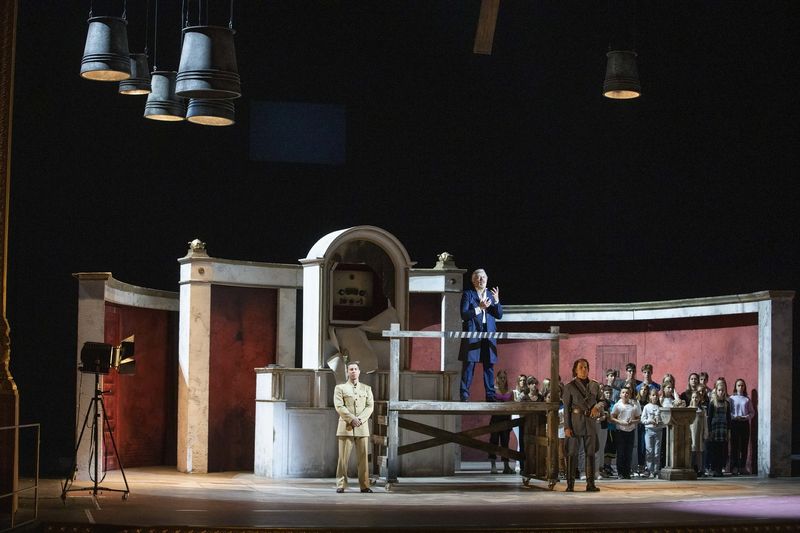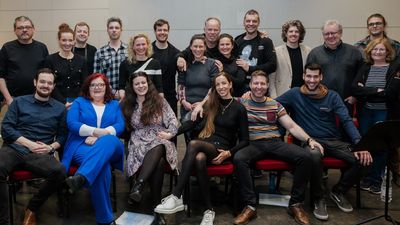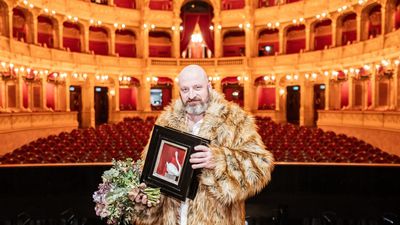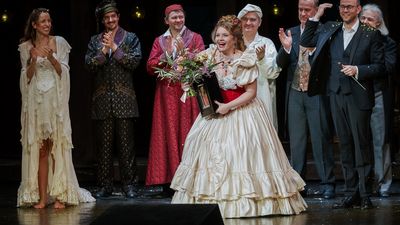
The Roman Republic, occupied by Spanish and Neapolitan forces at the dawn of the Napoleonic Wars, is replaced by the suffocating atmosphere of the communist dictatorship of the 1950s in the new production of the Hungarian State Opera. Director general Szilveszter Ókovács's second staging, conducted by Gergely Kesselyák, in a double cast, with Csilla Boross and Zsuzsanna Ádám in the title role, will be first presented on September 24th and 28th, 2022 at the Opera House in Budapest.
Political thriller, love tragedy, historical daram: Puccini’s tragic chamber piece of Tosca, a singer in love in search of happiness, Cavaradossi, a painter fighting against oppression, and Baron Scarpia, the unscrupulous chief of police standing in the way of their love, can touch even those who otherwise would be averse to the genre of opera. After its premiere in Rome in 1900, the piece went on to conquer the world and is now one of the most popular works of the opera oeuvre.
Shortly afterwards, the Hungarian Royal Opera also held the premiere of the piece in December 1903, which has been a great success ever since, having so far been performed 1160 times. The latest production, directed by Viktor Nagy in 1988, was last seen at the Margaret Island Open- Air Theatre in July this year, when it said farewell to the audience after 34 years and 300 performances.
Of the system represented by the bigoted Scarpia is a rarely emphasized, yet significant element is anti-religion, which contributed to the fact that in Szilveszter Ókovács's new production, the little-known historical background of the early Napoleonic wars is replaced by a parallel political system of the 1950s that is more comprehensible to the Hungarian audience. Thus, the church of Sant'Andrea della Valle, the Farnese Palace and the Castel Sant'Angelo of Rome are also replaced by such symbolic places as the Regnum Marianum Church or 60 Andrássy út (House of Terror). The visuals enhanced by projections (animation designer: Zsombor Czeglédi) were designed by Krisztina Lisztopád, with whom the director already collaborated with this spring on the highly successful Hunyadi László production.
One of Puccini's best-known works is presented by the OPERA with a double cast. At the premiere, the title role is sung by Csilla Boross, who, in addition to numerous performances in Budapest, also performed the character of Tosca in Prague, Brno, Rome and Macau, among others. Her partners at the premiere are chamber singer Attila Fekete as Cavaradossi, an experienced performer of the role, and Péter Kálmán making his debut as Scarpia. The other cast features Zsuzsanna Ádám, who makes her debut as Tosca, Cavaradossi is sung by Adorján Pataki, a heldentenor of the Hungarian Opera in Cluj, and chamber singer Mihály Kálmándy, a renowned performer of Scarpia. Further cast included Géza Gábor / István Kovács (Angelotti), László Szvétek / András Kiss (Sacristan), Tivadar Kiss (Spoletta), and András Káldi Kiss (Sciarrone / Jailer). The Hungarian State Opera Orchestra, Chorus (chorus director: Gábor Csiki) and Children's Chorus (chorus director: Nikolett Hajzer) are conducted by Gergely Kesselyák.


